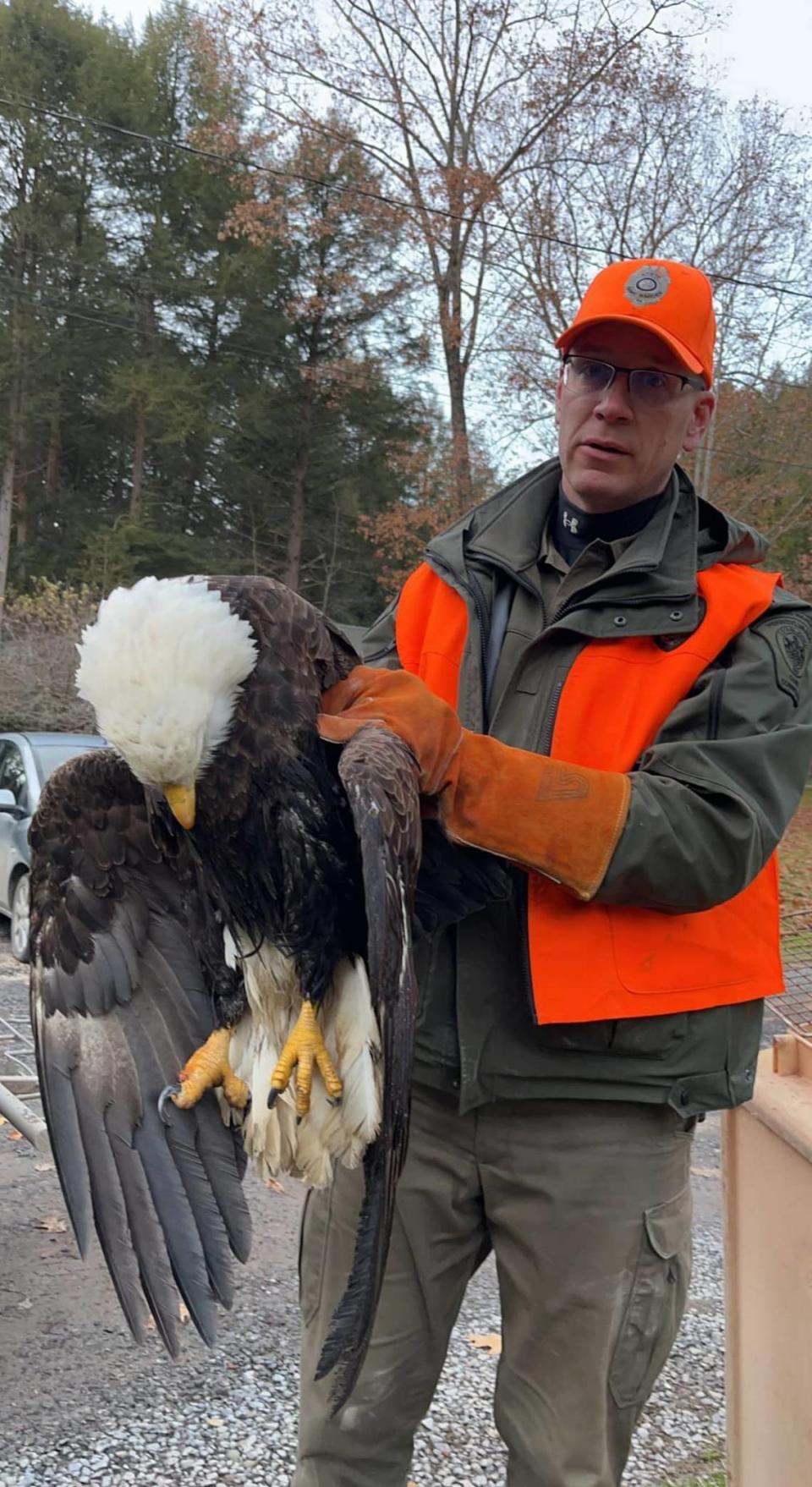Bald eagles dying ‘senseless deaths,’ Pennsylvania wildlife center says. Here’s why
Bald eagles — America’s symbolic bird — are dying “senseless deaths,” a wildlife center in Pennsylvania is warning.
These birds of prey are dying from lead poisoning and have been for years.
“This was a rough year with lead toxicity in our adult bald eagles,” Centre Wildlife Care, a rescue service in Port Matilda in Centre County, wrote in a Dec. 6 Facebook post.
In 2021 alone, eight bald eagles were brought to the center suffering lead poisoning, and seven died.
This problem isn’t exclusive to Pennsylvania; millions of birds are affected each year, including bald eagles, by lead toxicity that is a “leading concern” for many species, according to the American Eagle Foundation.
Poisoning is brought on after birds of prey eat animal carcasses shot with lead ammo by hunters.
“All scavengers and humans are at risk of lead toxicity when consuming meat shot with lead ammo (bullets or pellets) especially the avian scavengers such as eagles, hawks and vultures,” Robyn Graboski, a spokesperson and wildlife rehabilitator for the center, told McClatchy News via email.
“We ask all hunters to use non-lead alternatives when hunting because hunters are our first conservationists.”
One bald eagle brought to the center died on Dec. 5 after it was caught in a leg trap for 10 days, the center said in the news release.
“Sadly, the infection caused by the trap injury complicated by lead poisoning was just too great to overcome. These losses hurt.”
“Simple acts like switching from lead ammo to copper and properly covering traps from aerial view can prevent these senseless deaths,” the center urged.
The bald eagle that recently died “was flying around at least 10 days with a leg hold trap attached to its foot,” Graboski said. “It was caught when it was too weak to fly.”

“When it arrived, it was thin, weak, dehydrated, anemic, exhausted, lost a toe, had a bacterial infection,” alongside “suffering from lead toxicity,” they added.
Lead poisoning causes a slow death that could last weeks for birds if it goes untreated, the center explains online.
Birds of prey “get lead poisoning through leftover gut piles, un-retrieved carcasses and varmint carcasses left in the field,” according to the center, as fragments of lead ammo “left in the tissue of carcasses” get ingested.
Additionally, the winged creatures can be poisoned from “lead tackle left behind in fish,” the center warns.
“When the lead hits the bird’s acidic stomach, it gets broken down and absorbed into their bloodstream where it can be distributed to tissues throughout their body,” according to the Pennsylvania Game Commission.
If a bird appears “weak, emaciated, and uncoordinated” and is having trouble walking, flying or moving at all, those are likely signs of lead poisoning, the commission said.
The birds also might suffer seizures, appear blind and refuse to eat anything.
“Bald eagles with lead poisoning often do not respond at all when approached,” the commission added.
It advises hunters to bury an animal’s carcass or gut pile if lead ammo is used.
“If the carcass or gut pile it too large to be removed from the environment, it can be buried or covered with debris to prevent scavengers from accessing the carcass and lead fragments,” according to the commission.
In 2014, Ed Clark, the president and co-founder of the Wildlife Center of Virginia, said in a news release by the American Bird Conservancy that lead poisoning in bald eagles “is not a new problem.”
“The question is not whether or not lead is causing the deaths of eagles and other wild animals; the real question is, what are we going to do about it?”

